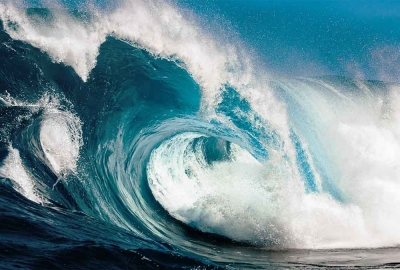
When the wind blows across an open area of water it causes waves. You can see this on the edge of lakes and ponds as well as the sea-shore, calm weather when winds are light, the waves are small. As winds strengthen, the waves grow larger. In stormy weather huge waves build up over hundreds of miles of ocean and eventually crash against the shore with terrifying force. But no matter how strong a wind is, the water itself does not move – the waves pass through it. In 1933 an American ship crossing the Pacific Ocean during a hurricane recorded a wave that measured thirty-four metres from its crest at the top to the trough at the bottom.
Huge as this is, earthquakes have produced even larger waves. These are called tsunamis, the Japanese for harbour waves’. Tsunamis are low waves that travel very fast – up to 790 kilometres per hour – across the ocean until they approach the shallow waters near land. There they grow much higher. In 1771 a tsunami estimated to be eighty-five metres high appeared off the Ryukyu Islands of southern Japan. The force of the wave was so great that it threw a boulder weighing 750 tonnes more than two and a half kilometres!
Picture Credit : Google



